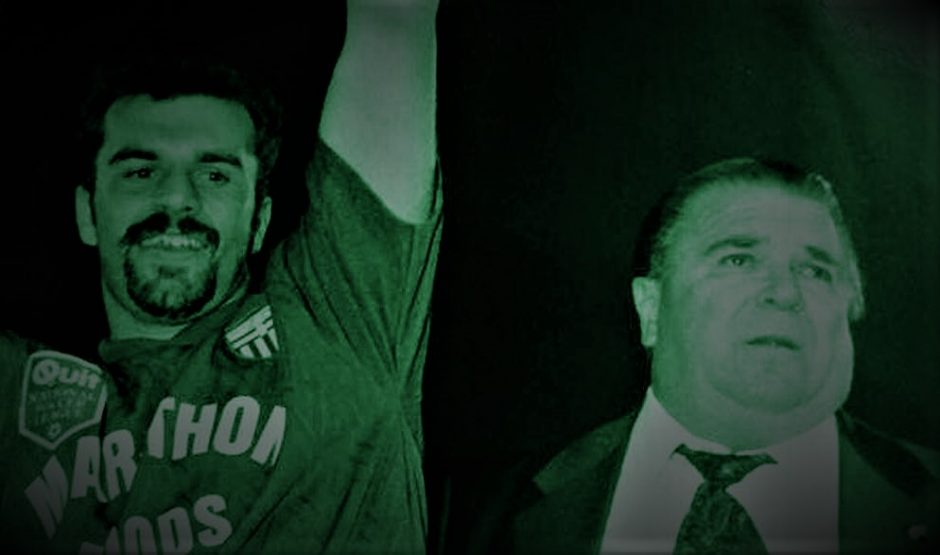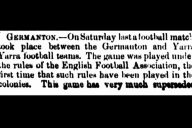In the corner of a park near the banks of the Yarra River in Melbourne, Australia, is a statue of a nuggety, muscular man born on the 1st of April, 1927, in Budapest, Hungary.
Walk by the park on some days, and you can watch Melbourne Victory going through their training drills in Gosch’s Paddock. Not too far away stands the benevolent figure of the great Ferenc Puskas, keeping watch to make sure the players have their technique just right, their focus on making the ball conjure the kind of magic he was renowned for as a player.
Led by Puskas, Hungary became the first team from Continental Europe to defeat England at home. Referred to by some as the ‘Match of the Century’, England’s 6-3 defeat was both a slap in the face to English football and a wake-up call. Puskas scored twice that day. That Hungary then belittled England 7-1 in the return match in Budapest only added further insult to injury.
Many regard Hungary’s style of play as a precursor to the Total Football revolution of the 1970s and a kind of spiritual forebear of the football Pep Guardiola instituted with his all-conquering Barcelona sides. Hungary played a fleet-footed, highly skilled passing game that bamboozled the English and many of their other opponents during the 1950s.
Many think they should’ve won the World Cup in 1954, but an injury earlier in the tournament to Puskas derailed that dream. Like the great Netherlands side of 1974, they never achieved the ultimate prize. However, both sides entered the hallowed realms of footballing greatness; totemic, iconic and idyllic.
Of course, many Australian football fans know the great Puskas enjoyed a successful spell with South Melbourne Hellas in the early 1990s. Ange Postecoglou was among his charges, a hard-running overlapping left-back playing alongside Hellas greats like Paul Trimboli, Micky Petersen, Paul Wade and Con Boutsianis, to name but a few.
I interviewed Postecoglou for Soccer International magazine a decade ago while he was in charge of the Brisbane Roar side. He fashioned ‘Roarcelona’ into one of the greatest club sides this country has ever seen. He was effusive in his praise for Puskas.
“When I was playing, probably the one person I learnt the most from was Ferenc Puskas, not just from a footballing point of view but also from a life point of view. He was one of the greatest footballers ever, but he was a very, very humble man, and he created an environment in our dressing room where we wanted to play for him. We wanted to win for him because he was such a fantastic person. I learnt a lot about how to create a really good team spirit and environment from playing under him.”
There’s a certain spiritual rightness, kismet, in Postecoglou finding his way to Celtic.
At Parkhead, he will be crossing historical paths with the man credited with making Puskas and the great Hungarian side of the 1950s possible in the first place, a man some see as the fountainhead of all that is righteous and beautiful in modern football.
Postecoglou’s appointment at Celtic establishes a fleeting link with the great Jimmy Hogan, arguably the forefather of the attractive high-intensity passing game that Postecoglou has favoured throughout his coaching career. A style of play that has earned him plaudits and success, and now the opportunity to become the first Australian to have ascended to such managerial heights in European football. (Excepting, of course, maybe Joe Montemurro in women’s football.)
Born in 1882 in the Lancashire town of Nelson, Hogan is widely credited with spreading the gospel of the ‘Scottish passing game’ throughout Europe, particularly within Hungary, Austria and Switzerland during the first few decades of the 20th Century.
As Jonathan Wilson writes in his book ‘Inverting the Pyramid: The History of Football Tactics’, Hogan’s influence on football development in Mitteleuropa was immense.
“The greatest teacher of the Scottish game, though, was an Englishman of Irish descent: Jimmy Hogan. Born and raised in Burnley in a staunchly Roman Catholic family, in his teens he toyed with the idea of entering the priesthood, but he turned to football and went on to become the most influential coach there has ever been.”
The Scottish style diverged from the kick and rush that had dominated the game in its infancy, emphasising technique and skills such as dribbling and short passing rather than speed and brute strength.
His success with the Budapest-based club MTK sparked the imagination of young Hungarians and laid the foundation for that country’s run of success throughout the 1930s and, most famously, into the 1950s.
Hogan’s missionary work in Hungary left an indelible mark. Hungary’s coach, Gusztav Sebes, said when asked about the victories over England in 1953: “We played football as Jimmy Hogan taught us. When our football history is told, his name should be written in golden letters.”
Along with 100,000 others in the stands that day at Wembley, Hogan watched the Hungarians dismantle the myth of England’s invincibility at home.
According to some sources, following these defeats, the secretary of the English FA referred to Hogan as a traitor while captain Billy Wright expressed similar sentiments.
The English football establishment never embraced Hogan or his ideas. His managerial career in England was sporadic and patchy. Guiding Aston Villa back into Division 1 in the 1937/38 season was his only real highlight.
Norman Fox, the author of a book about Hogan, writes that he was a prophet abroad but a pariah at home.
“Hogan had long tried to convince English administrators that their football had gone backwards. Ball skills, he said, had been lost in kick-and-rush. The Football Association’s detached, superior attitude meant that they failed to recognise ‘the shining example of the coaching profession’, as the West German team manager Helmut Schoen later described him. In his youth, Schoen had been coached by Hogan at Dresden FC.”
Hogan spent two relatively fruitless seasons as a coach at Celtic, arriving in 1948 to partner with manager Jimmy McGrory to revive the club’s flagging fortunes.
He worked productively at Parkhead, but his ideas were never fully embraced. Maybe his most lasting legacy at Celtic was his profound influence on the club’s youngsters, including a future coach of South Melbourne Hellas, Tommy Docherty.
(For an excellent deep dive of Docherty’s time at South Melbourne, read Paul Mavroudis’ account on his South of the Border blog.)
Docherty managed Manchester United, Chelsea, Queens Park Rangers, Scotland, and many others during a colourful career. He also graced the NSL, taking charge at Sydney Olympic and then at Postecoglou’s old club, South Melbourne Hellas, in the 1982 season. It’s possible Postecoglou might have even come into contact with ‘The Doc’ as a youth team player as he made his senior team debut in 1984.
Docherty remembers Hogan with warmth as one of the biggest influences on his managerial style.
“It was in the days of Charlie Tully and players like that, and they looked upon coaching as a bit of a joke. But Jimmy was a fantastic man. I was amazed by his practical ability. Even as an old man, he could still hit a bucket from 30 yards. He was a very religious Roman Catholic; he never swore. His arrival at Celtic Park was the best thing that ever happened to me…”
“He went over to coach in Hungary before he came to Celtic. He coached Puskas as a boy and told us how some of his players didn’t have so much as a pair of boots. But they wanted to learn.”
Ron Atkinson was another manager who came under the spell of Hogan’s ideas during his time as a youth player under Hogan’s tutelage.
“His coaching was revolutionary at the time. We did everything with the ball, which was foreign to coaching in those days. You talk about people being ahead of their time; well, he was certainly that.”
Incredibly, the Hogan DNA had made its presence felt at South Melbourne Hellas through the conduit of both Tommy Docherty, and more substantially, Ferenc Puskas. An eager student of the game, Postecoglou likely soaked up this influence. You could see it in the way South Melbourne played football under Puskas, and how Postecoglou has coached his teams.
Postecoglou’s appointment is a crucial moment in Australian football. The only Scottish club to have ever won the European Cup (for the whipper-snappers, that’s what we called the Champions League back in the day), Celtic have a stupendous 51 league titles to their name. They are a legitimately legendary football club—an institution.
Alongside their on-field feats, Celtic have a fanatical worldwide following matched by very few other clubs. Few matches anywhere in the world are more viscerally charged than the Old Firm derby. (Though since 2012 many Celtic fans have referred to the match as the Glasgow Derby rather than the Old Firm because they don’t acknowledge the historical continuity of Rangers as an entity after the club’s financial collapse led to its liquidation.) Australian players like Mark Viduka, Scott McDonald and Tom Rogic could attest to that. However, not so Postecoglou’s right-hand man at Melbourne Victory, Kevin Muscat, who was apparently deemed by Rangers manager Alex McLeish as too combustible to risk playing in the derby.
When Postecoglou walks out onto Parkhead for his first game in charge, he will be walking in the footsteps of giants, legendary figures like Willie Maley and Jock Stein, and in more recent times, Martin O’Neill, Neil Lennon and Brendan Rodgers.
And like at South Melbourne Hellas, where he started his playing and coaching careers, he will find trace elements of the spirit of the great Jimmy Hogan there too, willing him on to defy the critics and play the beautiful game.
The feature photo is of Ange Postecoglou and Ferenc Puskas celebrating South Melbourne’s victory in the 1991 NSL Grand Final. Source: South Melbourne FC.

















Very interesting good read David j
Lovely account of links in a chain. Thanks.